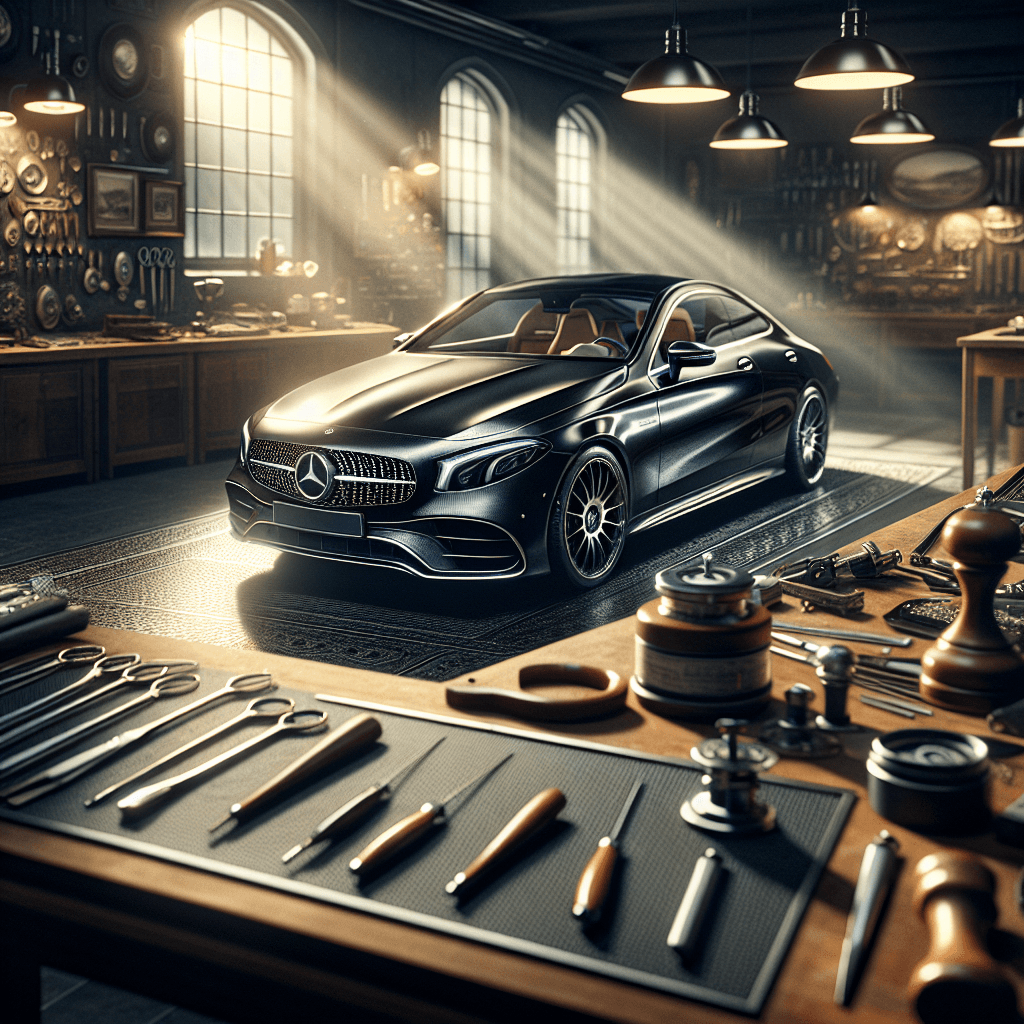How Two German Giants Created the Ultimate Sleeper Sports Sedan
The Mercedes-Benz 500E stands as a testament to a unique collaboration between Mercedes-Benz and Porsche, two titans of the German automotive industry. This vehicle not only exemplifies high-performance engineering but also embodies a rich narrative of craftsmanship, innovation, and cross-company synergy.
- The Genesis of the Mercedes-Benz 500E
- Design and Engineering: A Blend of Expertise
- The Unique Production Process
- Cultural Impact and Legacy
- Collectibility and Timeless Appeal
- Reflecting on a Masterpiece of Automotive Collaboration
The Genesis of the Mercedes-Benz 500E
In the late 1980s, Mercedes-Benz envisioned a new vehicle that would seamlessly combine the comfort of their luxury sedans with the performance typically reserved for sports cars. The result was the Mercedes-Benz 500E, a model that debuted at the 1990 Paris Motor Show and quickly set new standards for high-performance sedans.
The inception of the 500E was marked by Mercedes-Benz’s strategic decision to collaborate with Porsche, a company renowned for its sports car engineering prowess. This partnership was initially driven by Mercedes-Benz’s desire to incorporate sports car performance into their robust sedan framework, and Porsche’s capacity for bespoke manufacturing and specialized handling dynamics.
Strategic Collaboration
The collaboration was as much a necessity as it was a strategic maneuver. During this period, Porsche was experiencing a downturn in sales, and the contract to engineer and assemble the 500E provided a much-needed financial boost. For Mercedes-Benz, Porsche’s involvement ensured that the 500E would be built with the precision and care that only a company with Porsche’s racing heritage could offer.
Design and Engineering: A Blend of Expertise
The 500E was meticulously designed to offer a balance of luxury and performance. Under the hood, the car featured a powerful 5.0-liter V8 engine derived from the Mercedes-Benz SL500. This engine was capable of producing 322 horsepower and could propel the 500E from 0 to 60 mph in just 5.9 seconds, an impressive feat for a sedan of its size during the early 90s.
However, the engine was only part of the story. The 500E’s suspension was engineered by Porsche to enhance handling and stability, ensuring that the vehicle could manage its power effectively. The bodywork was also modified to accommodate the larger engine and wider track, with flared wheel arches and a lower stance that hinted at the car’s sporting intentions.
Interior Luxury
Inside, the 500E maintained the high standards of luxury expected from a Mercedes-Benz. The interior was adorned with premium leather, wood trim, and featured all the contemporary amenities of a top-tier luxury sedan, including advanced climate control, high-end audio systems, and meticulous attention to detail in the fit and finish.
The Unique Production Process
The production of the 500E was a remarkable feat, blending traditional assembly line techniques with handcrafted precision. Unlike typical cars that are fully assembled in one factory, the 500E’s production involved a complex logistical dance between Mercedes-Benz and Porsche.
Each 500E chassis was initially built at the Mercedes-Benz plant in Sindelfingen, then transported to Porsche’s Rossle-Bau plant in Zuffenhausen where the engine installation and final assembly were completed. This process was so intricate that it took a full 18 days to assemble each vehicle.
Quality Assurance
Quality assurance was paramount, with each vehicle undergoing rigorous testing and inspection before being deemed ready for delivery. This meticulous attention to detail ensured that each 500E met both Mercedes-Benz’s and Porsche’s high standards of quality and performance.
Cultural Impact and Legacy
The Mercedes-Benz 500E quickly garnered acclaim for its exceptional balance of luxury and performance, becoming a cult classic among automobile enthusiasts. Its legacy is not just based on its performance metrics but also on its role as a symbol of successful collaboration between two competing brands in the automotive industry.
The 500E influenced subsequent designs in both companies, pushing Mercedes-Benz to continue integrating high-performance engineering in their luxury sedans and inspiring Porsche to explore four-door models, culminating in the development of the Porsche Panamera.
Collectibility and Timeless Appeal
Today, the Mercedes-Benz 500E is highly prized as a collectible. Its limited production numbers, unique heritage, and the story of collaboration between Mercedes-Benz and Porsche make it particularly appealing to collectors and enthusiasts who value both performance and historical significance.
The 500E’s appeal is enhanced by its understated aesthetics which embody the essence of a ‘sleeper’ sports sedan — a car that possesses significant performance capabilities yet maintains a discreet and elegant appearance.
Reflecting on a Masterpiece of Automotive Collaboration
The Mercedes-Benz 500E stands as a landmark achievement in automotive history, a perfect blend of luxury, performance, and collaborative engineering. It remains a testament to what can be achieved when two industry giants combine their expertise and resources to create something truly exceptional.
For further exploration of this iconic model, enthusiasts and historians alike can delve into detailed archives and exhibitions, such as those found at the Mercedes-Benz Museum.



